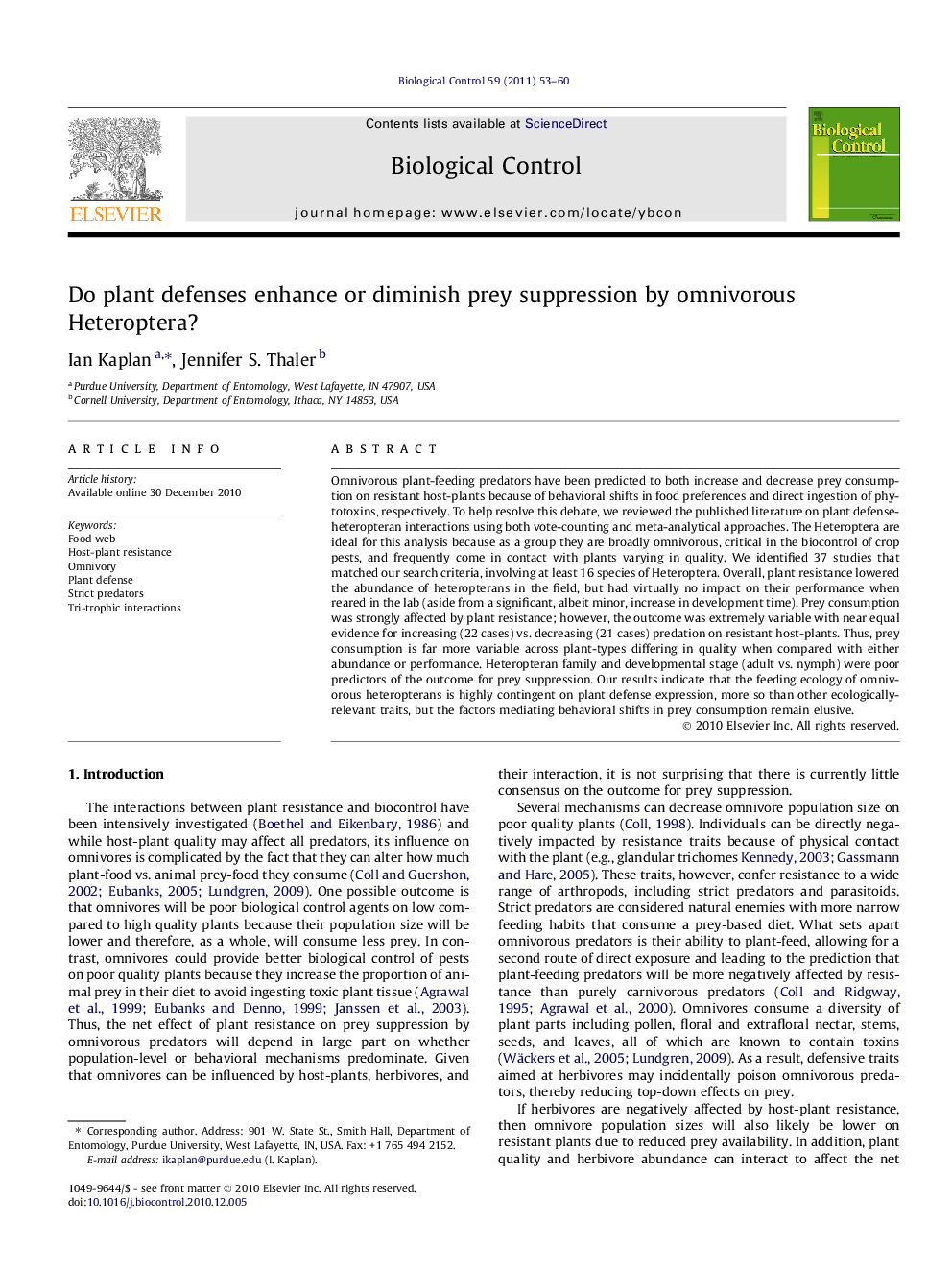| Article ID | Journal | Published Year | Pages | File Type |
|---|---|---|---|---|
| 4504183 | Biological Control | 2011 | 8 Pages |
Omnivorous plant-feeding predators have been predicted to both increase and decrease prey consumption on resistant host-plants because of behavioral shifts in food preferences and direct ingestion of phytotoxins, respectively. To help resolve this debate, we reviewed the published literature on plant defense-heteropteran interactions using both vote-counting and meta-analytical approaches. The Heteroptera are ideal for this analysis because as a group they are broadly omnivorous, critical in the biocontrol of crop pests, and frequently come in contact with plants varying in quality. We identified 37 studies that matched our search criteria, involving at least 16 species of Heteroptera. Overall, plant resistance lowered the abundance of heteropterans in the field, but had virtually no impact on their performance when reared in the lab (aside from a significant, albeit minor, increase in development time). Prey consumption was strongly affected by plant resistance; however, the outcome was extremely variable with near equal evidence for increasing (22 cases) vs. decreasing (21 cases) predation on resistant host-plants. Thus, prey consumption is far more variable across plant-types differing in quality when compared with either abundance or performance. Heteropteran family and developmental stage (adult vs. nymph) were poor predictors of the outcome for prey suppression. Our results indicate that the feeding ecology of omnivorous heteropterans is highly contingent on plant defense expression, more so than other ecologically-relevant traits, but the factors mediating behavioral shifts in prey consumption remain elusive.
Graphical abstractFigure optionsDownload full-size imageDownload as PowerPoint slideResearch highlights► Plant resistance reduced Heteroptera abundance but had little impact on performance. ► Prey consumption increased (22 cases) and decreased (21 cases) on resistant plants. ► Variation affected by exposure route (direct feeding vs. indirect prey-mediated).
